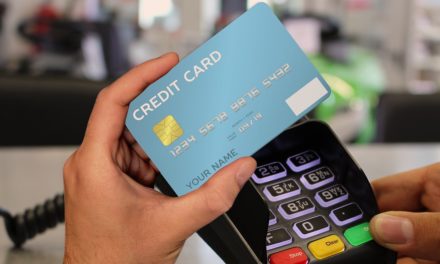Budgeting can sometimes feel like a daunting task, with its spreadsheets, calculations, and restrictions. But what if there was a not-so-secret ingredient that can make budgeting not just easier, but more enjoyable? It’s called “fun money.”
This is all about ensuring that your family has the opportunity to enjoy life, have fun, and make memorable experiences together.
This is where “fun money” comes into play. In this comprehensive guide, we’ll explore what fun money is, how families can incorporate it into their monthly budget, and how to feel comfortable using it.
What Is Fun Money?

Fun money is an allocation of your budget that’s specifically set aside for guilt-free spending on activities, treats, or items that bring joy to your family’s life. It’s the cash you can use to treat yourself without any remorse. A financial cushion that allows you to splurge on things that may not be essential but add quality to your lifestyle.
Fun money is an essential component of budgeting that often gets overlooked, but it plays a crucial role in promoting financial well-being and a healthy relationship with money.
Our 5 tips for saving money at Disneyland
The Purpose of Fun Money
Fun money serves several essential purposes within a family’s financial framework:
- Stress Relief: It provides a break from the routine and allows your family to indulge in something enjoyable without worrying about the financial consequences.
- Encourages Savings: Having a designated fun money category prevents impulsive spending from other parts of your budget, promoting better financial discipline.
- Enhances Quality of Life: Fun money enables your family to enjoy the little pleasures of life, fostering happiness and togetherness.
- Prevents Burnout: Budgeting can be hard work, especially when you’re constantly denying yourself. Fun money gives you a break from the routine of strict financial discipline and can help prevent budget burnout. It’s a way to maintain balance in your financial life.
Now that we’ve covered the why, let’s explore how you can practically incorporate fun money into your monthly budget.
How to Incorporate into Your Monthly Budget
Incorporating fun money into your family budget is a straightforward process that requires careful planning and discipline. Here’s how you can do it:
- Assess Your Financial Situation: Before you allocate fun money, take a close look at your overall financial situation. Determine your total monthly income and identify your fixed expenses (like rent or mortgage, utilities, and insurance) and variable expenses (like groceries, transportation, and entertainment). Understanding your financial picture is crucial for effective budgeting.
- Establish Your Financial Goals: Once you have a clear view of your finances, set specific financial goals. These goals could include paying off debt, saving for a vacation, or building an emergency fund. Prioritize these objectives based on their importance to your family.
- Determine a Fun Money Allocation: Decide how much you can comfortably allocate to fun money without compromising your essential financial goals. A common guideline is to allocate around 5-10% of your monthly income to fun money. This allows for indulgence without jeopardizing your financial stability.
- Create a Separate Fun Money Category: In your monthly budget spreadsheet or app (this is my favorite budgeting app), create a dedicated category for fun money. This helps you keep track of your discretionary spending.
- Track Fun Money Expenses: Just as you track your other expenses, keep a record of your fun money expenditures. This helps you stay within your allocated budget and avoid overspending.
- Use Cash or a Separate Account: Some people find it easier to control their fun money by using cash or setting up a separate bank account. Having a physical or virtual “fun money envelope” can help you visualize your spending and make it more tangible. We have multiple savings accounts that operate in a variety of ways to help us accomplish our different goals.
What to know when looking for a financial planner
Fun Money Can Prevent Disagreements
One significant advantage of incorporating fun money into your budget is its ability to prevent disagreements between partners, especially in relationships where finances can be a source of tension. Here’s how fun money can help:
- Financial Independence: Fun money allows both partners in a relationship to have financial independence within the boundaries of their budget. Each person can spend their fun money as they see fit, without needing approval from the other. This reduces conflicts over individual spending preferences or habits.
- Transparent Communication: Including fun money in your budget encourages open and honest communication about your financial goals and desires. It’s an opportunity to discuss your priorities, which can lead to better understanding and compromise.
- Reduces Resentment: When both partners have their own designated fun money, it minimizes resentment that can arise from feeling like one person is always controlling the finances or that one partner is overspending. Fun money ensures a fair and equitable distribution of discretionary spending.
Examples of Fun Money Budgeting in Different Families
Let’s explore three examples of how families can budget fun money into their monthly expenses, each with unique financial situations:
Example 1: The Smith Family’s Fun Money Budget – Monthly Income: $5,000 (after taxes)
The Smith family allocates 5% of their discretionary income, which amounts to $250 per month, to their fun money category. This budget enables them to still ensure bills, loans and other expenses can be covered while still enjoying occasional outings and treats and sticking to their financial goals.
Example 2: The Johnsons’ Fun Money Budget – Monthly Income: $7,500 (after taxes)
The Johnsons allocate 8% of their discretionary income, or $600 per month, to fun money. Bills, rent/mortgage, loans, debt and other essentials can still be covered but allows for some guilt-free spending, especially with young kids.
Example 3: The Andersons’ Fun Money Budget – Monthly Income: $10,000 (after taxes)
The Andersons allocate 8% of their discretionary income, which totals $800 per month, to fun money. With a more established career they balance enjoying life with saving for their children’s college education and other expenses.
Money Freedom
Fun money is an integral part of any family budget. It allows your family to enjoy life, reduce stress, and nurture a sense of togetherness.
Whether it’s creating an individual fun money budget for each partner, or combining the expenses together for the family, fun money can reduce stress, enhance enjoyment and help create memories and strong financial management.
So, go ahead and budget for fun – your family deserves it!
I am not a financial professional. The information in this post is for informational purposes only. I may receive compensation from advertisements when you click on links to those products on this page.













